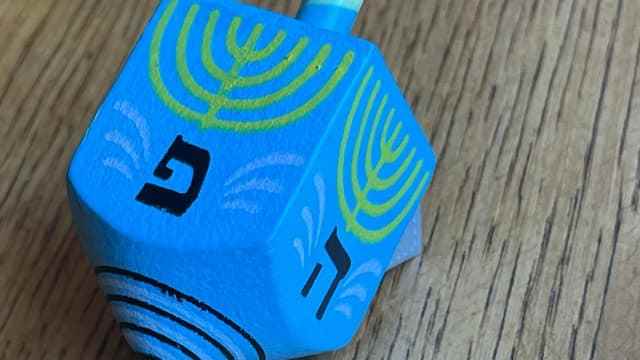contents
The Jewish Festival of Lights is about an oil miracle, but also about self-determination. The SRF religion expert explains what is behind Hanukkah.
The eight-day festival commemorates the recapture of the Jewish Temple. Hanukkah (חנוכה) means consecration or initiation. What is meant is the rededication of the temple in Jerusalem 165 BC.
rebellion against the idol
The Seleucid foreign rulers – successors of Alexander the Great – had conquered and desecrated Israel and the Temple. They put a statue of Zeus in it – a sacrilege. After all, the temple was dedicated to the one and only God of Israel. No sculptures were allowed to be set up there, let alone “idols”.
Sections of the Jewish people rebelled against this demonstration of power by the Seleucids. Their rebellion was led by Judas Maccabeus (“the hammer”). The Jewish royal house of the Maccabees and Hasmoneans was later founded on him.
The Oil Miracle
After the victorious uprising, these shaped a phase of relative political sovereignty as high priests and kings. It lasted almost a hundred years until 63 BC. Then the Roman Pompey entered Jerusalem.
After the recapture of the temple, a consecrated cask of oil, a daily ration, is said to have burned not for one but for eight days. This miracle is celebrated to this day.
Festival of self-determination
But Hanukkah is also about emancipation. Zionists in particular celebrate it as a celebration of state sovereignty. The strength of the Maccabees is an example to them. It is no coincidence that many Jewish sports clubs have “Makkabi” in their names.
At Hanukkah, Jewish families should confidently place the Hanukkah candlestick in their windows, i.e. in a public view, every evening as soon as it is dark.
Candles are for children
This candlestick has eight candles and usually also a ninth, slightly offset light. The other candles are lit with this «official light»: one more every evening, until «Hanukkia» is fully lit on the eighth evening.
Lighting candles is a popular job for children. In Europe they also get small gifts. This is due to Christmas and the Christian majority society.
Hanukkah under the Christmas tree
Especially in multi-religious families, the customs mix because of the temporal and cultural proximity to Christmas: There the fir tree stands next to Hanukkiah.
Orthodox communities reject this. The reason lies in the origin of Hanukkah: They also interpret the festival as a festival to ward off non-Jewish customs.
Criticism of “Christmas Ukka” also comes from liberal Jewish quarters. After the Holocaust, the Weihnukka tree was considered a symbol of the German-Jewish symbiosis that had horribly failed.
Today it is seen a little more loosely. After all, half of all Jewish people in Switzerland marry non-Jewish partners.
Celebrate with Dreidel and Donut
Hanukkah today is one thing above all: party. Bands like «The Maccabeats» celebrate with Hanukkah songs.
There are dishes fried in oil, which are supposed to remind of the oil miracle. For example, latkes, potato pancakes, or “Sufganiot”: a type of filled Berliner from which the donut is said to have developed.
Traditionally, the children pass the time with spinning tops. The Hanukkah toy, the Dreidel, has four sides, each with a letter. They stand for the sentence: “A great miracle happened there.”
Radio SRF 1, keyword religion, December 18, 2022, 9:30 a.m.
